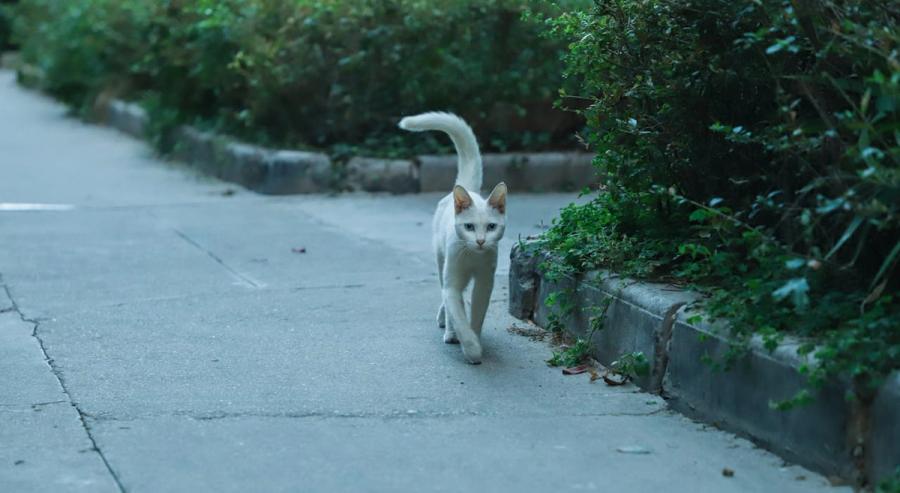
The Secret Language of Cat Tails
Published: 4/15/2025
Cats are masters of silent communication. While they may not bark orders like dogs or speak our language, they constantly “talk” to us—and to each other—using subtle body cues. One of the most expressive, yet often overlooked, tools in their communication toolkit? Their tail.
A cat’s tail is like an emotional antenna—capable of broadcasting joy, fear, curiosity, or even brewing irritation with a single flick. But unlike meows or purrs, these tail signals are silent. That’s why many cat owners miss what their feline companions are trying to say.
In this post, we’ll decode the hidden meanings behind common cat tail positions and movements. By the end, you’ll be able to read your cat’s tail with confidence—and understand them on a whole new level.
The Anatomy Behind Tail Communication
To fully appreciate the language of the tail, it helps to understand what makes it so agile and expressive in the first place.
A cat’s tail is made up of 18 to 23 vertebrae, all held together with powerful muscles, tendons, and ligaments. These are directly connected to the cat’s central nervous system, giving them fine-tuned control over even the smallest movement—from a twitch to a dramatic puff-up.
Yes, tails play a key role in balance—helping cats navigate tight spaces, make mid-air adjustments while jumping, and land with grace. But they’re more than just a balancing pole. The tail is also a sophisticated communication device, capable of sending subtle social and emotional signals.
Thanks to its mobility and flexibility, the tail acts like a visual mood ring—letting others know if the cat is confident, cautious, playful, or ready to pounce. The more attuned you are to these signals, the more fluent you become in your cat’s unspoken language.
10 Common Cat Tail Positions & What They Mean
Every tail twitch or curve carries meaning. Below are the most common tail positions your cat uses to communicate, along with what they’re likely feeling when they do it.
Tail Held Straight Up
Signals: Confidence, friendliness, excitement
This is the universal “hello” in cat language. When a cat walks toward you with its tail held high, it’s a sign of comfort and social confidence. If the tip is slightly quivering, they’re likely excited—maybe about food or just happy to see you.
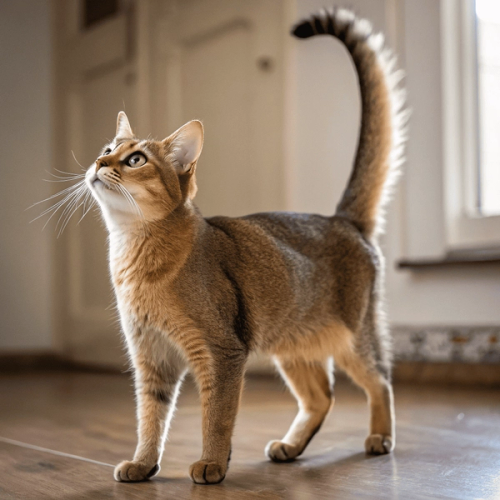
Curved Like a Question Mark
Signals: Playfulness, curiosity
A tail shaped like a hook or question mark often means your cat is feeling playful or inquisitive. It’s a good time to grab a wand toy and interact—they’re likely in the mood for fun.
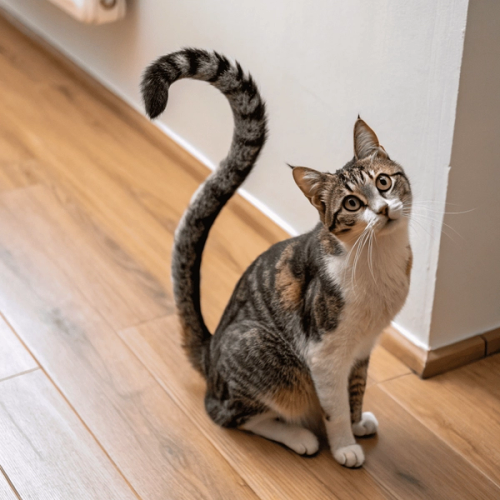
Tail Low to the Ground
Signals: Unease, anxiety, fear
When your cat keeps their tail low and close to the floor, they’re feeling unsure or threatened. This is a defensive posture—often used in new environments or around unfamiliar animals or people.
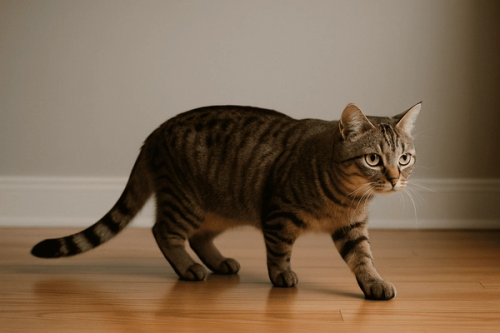
Tucked Between the Legs
Signals: Submission, insecurity
A cat that tucks its tail tightly under its body is experiencing fear, shame, or vulnerability. This submissive signal is common during vet visits or when being scolded (even if they don’t understand why).
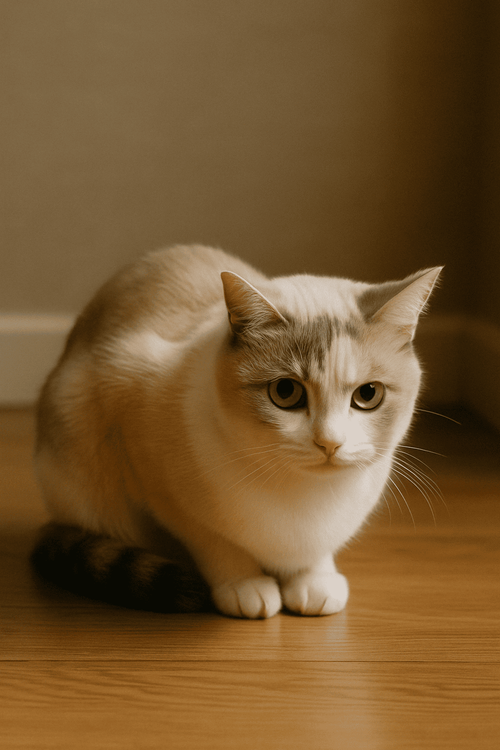
Puffed Up Tail
Signals: Fear, aggression, defensive posture
The infamous “bottle brush” tail means your cat is in fight or flight mode. This dramatic puff-up is a defense mechanism—they’re trying to appear larger and scarier to intimidate a perceived threat.
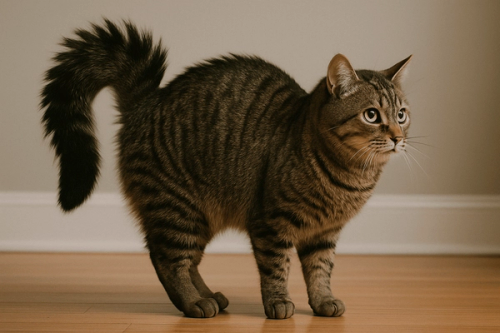
Tail Wrapped Around the Body
Signals: Caution, uncertainty, observation
When a cat sits or lies with their tail wrapped tightly around their body, it’s often a sign they’re in observation mode. They’re not scared, but they’re not ready to engage just yet.
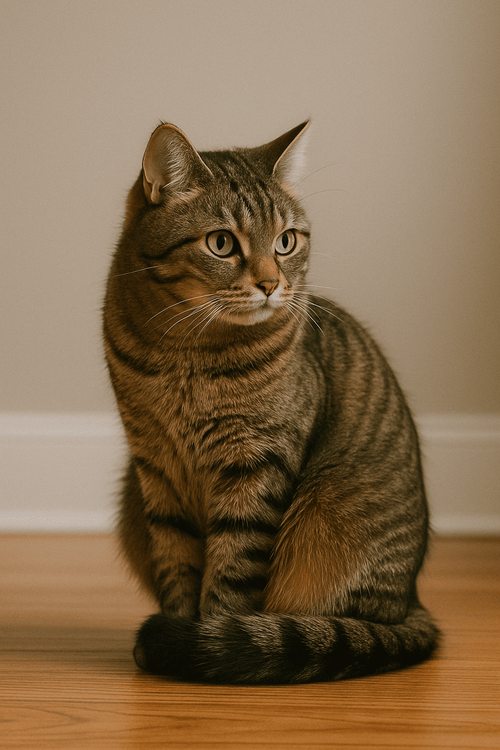
Gently Swishing Tail
Signals: Focus, curiosity
A slow, deliberate swish means your cat is paying close attention—often during hunting or play behavior. They’re zoned in, watching and waiting to pounce.
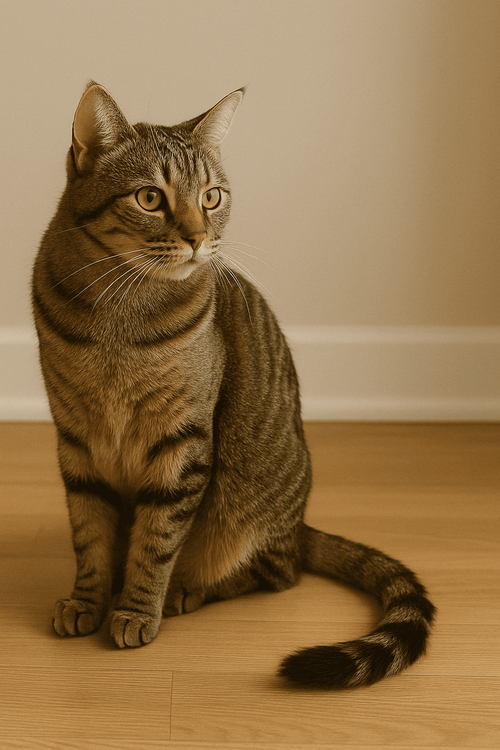
Rapidly Thrashing or Thumping Tail
Signals: Agitation, irritation, “back off”
This is your cat’s final warning. A tail that’s whipping back and forth quickly means they’re overstimulated, annoyed, or conflicted. If you’re petting them—stop. Immediately.
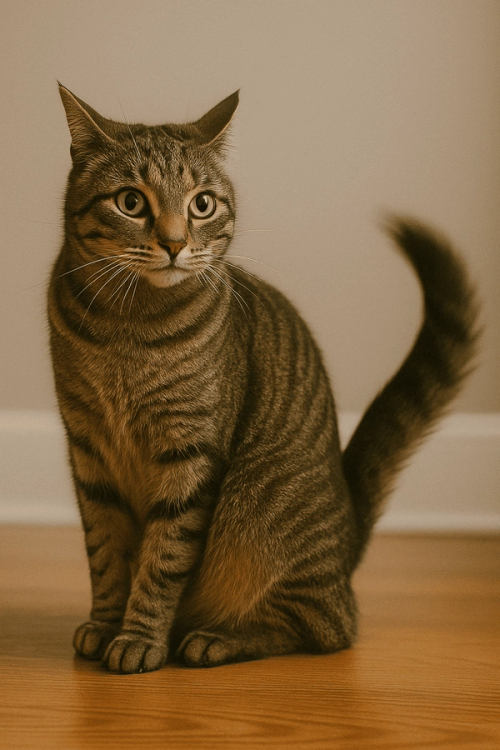
Hooked Tail Tip
Signals: Affection, light curiosity
When a cat holds their tail up with the tip slightly curled, it usually means they’re content and relaxed. This is often seen when they approach you calmly or greet you after a nap.
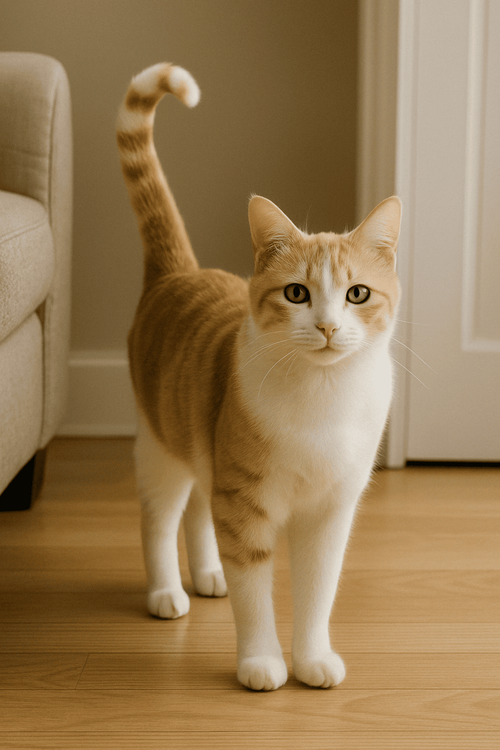
Quivering Tail
Signals: Excitement, territory marking (context-dependent)
A tail that vibrates or quivers—usually in an upright position—can indicate pure joy, like when your cat greets you at the door. But beware: if they’re backing up to a surface while doing this, they might be spraying to mark territory.
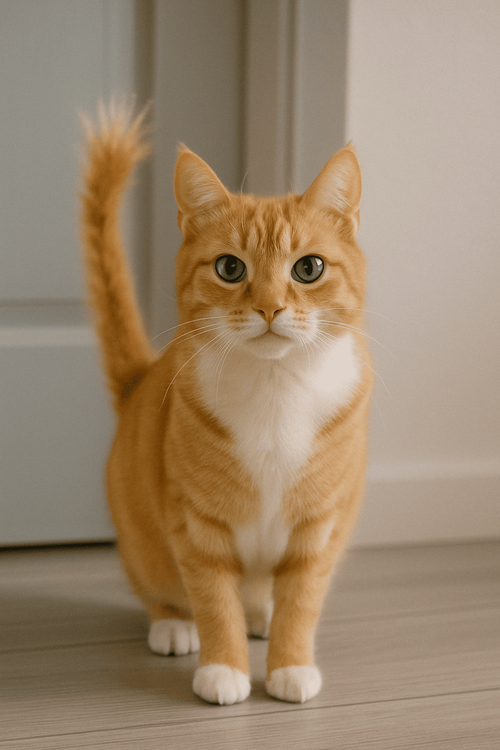
Context Is Everything
Tail movements are powerful signals, but they rarely tell the whole story on their own. To accurately interpret what your cat is feeling, you need to consider the bigger picture—their full body language and the situation they’re in.
Look for These Clues Alongside Tail Movements:
- Ear Position: Are the ears forward (curious), sideways (uncertain), or flat (fearful or aggressive)?
- Posture: Is the cat crouching, arching, or confidently striding?
- Eye Contact: Are the pupils wide (alert or anxious) or narrowed (focused or relaxed)?
- Vocalizations: Is there meowing, growling, or silence?
Example:
- A puffed-up tail alone might suggest your cat is being playful. But if it’s paired with flattened ears, dilated pupils, and a low posture, it likely signals fear or defensive aggression, not playfulness.
Always view tail signals as one part of a bigger message your cat is sending.
How Cats Use Their Tails With Humans vs. Other Cats
Cats adapt their communication styles depending on who they’re talking to—yes, really!
With Humans
Domesticated cats have developed unique tail behaviors specifically for us. One of the most iconic? The high tail greeting. When your cat approaches you with their tail straight up, it’s their version of a warm smile or a “Hey, friend!”
This behavior is rarely seen in wild cats—it’s a social adaptation of domestication, created just for human interaction.
With Other Cats
Tail use between cats is more subtle and less exaggerated. Instead of flamboyant tail postures, cats rely heavily on:
- Ear movement
- Body distance
- Scent marking
- Slow blinking and head gestures
In multi-cat households, tail communication can vary widely. You might notice one cat using their tail like a flag, while another remains reserved. This variation is natural—it depends on the cat’s personality, past experiences, and social confidence.
The Power of Paying Attention
Learning to read your cat’s tail isn’t just fascinating—it’s incredibly useful.
Why It Matters:
- You’ll know when to approach and when to give space.
- You can detect early signs of stress or illness.
- You’ll build a stronger emotional connection through better communication.
A swishing tail, for example, may help you recognize overstimulation before a scratch or bite occurs. And a tucked tail might alert you to anxiety, prompting you to adjust their environment.
Don’t Guess—Observe.
Your cat is always “talking.” You just have to learn their language. Once you do, you’ll respond more intuitively, making your cat feel understood and safe—which strengthens your bond over time.
Conclusion
Your cat may not speak in words, but their tail says plenty.
From high-held greetings to twitchy signs of irritation, the tail acts as a mood ring—a constantly moving reflection of what your feline is thinking and feeling.
By tuning into this silent language, you’re not just becoming a better pet parent—you’re becoming your cat’s trusted companion and interpreter.
Have you noticed a funny or surprising tail behavior in your cat?
Share it in the comments below—because every tail has a story! 🐾